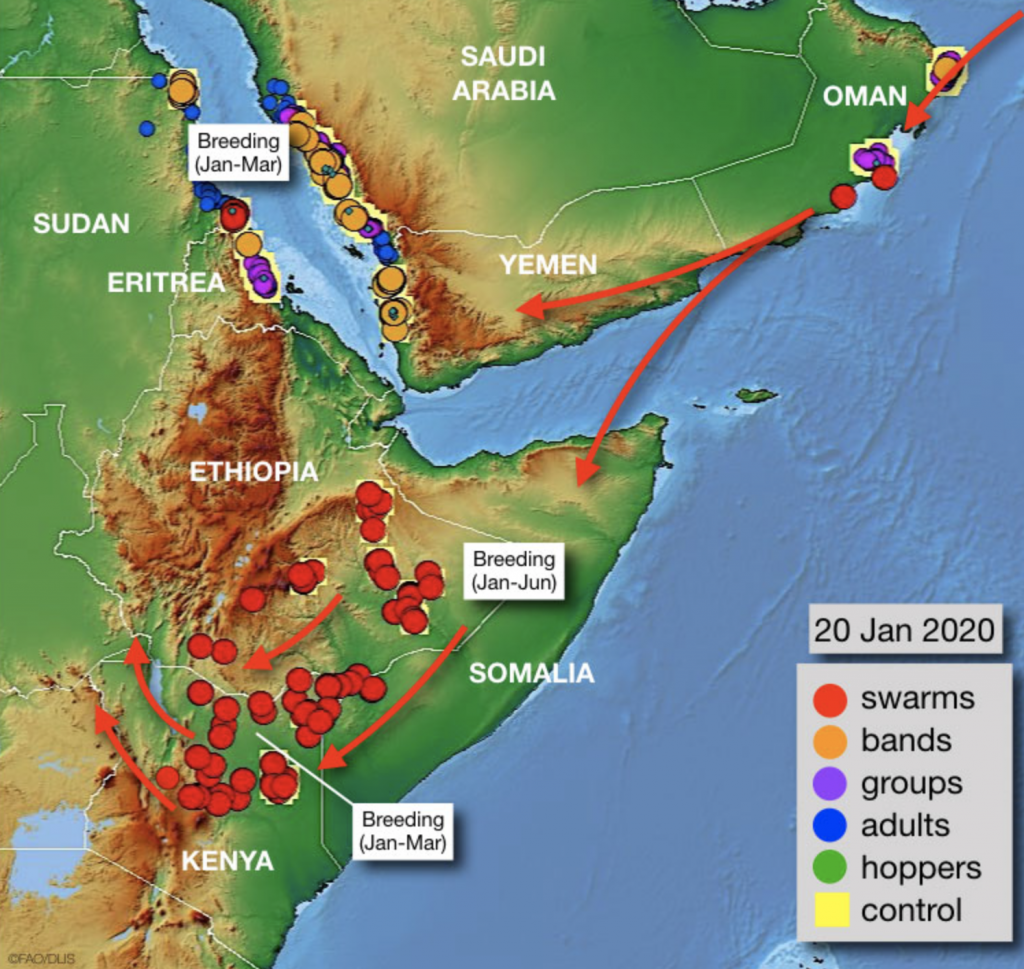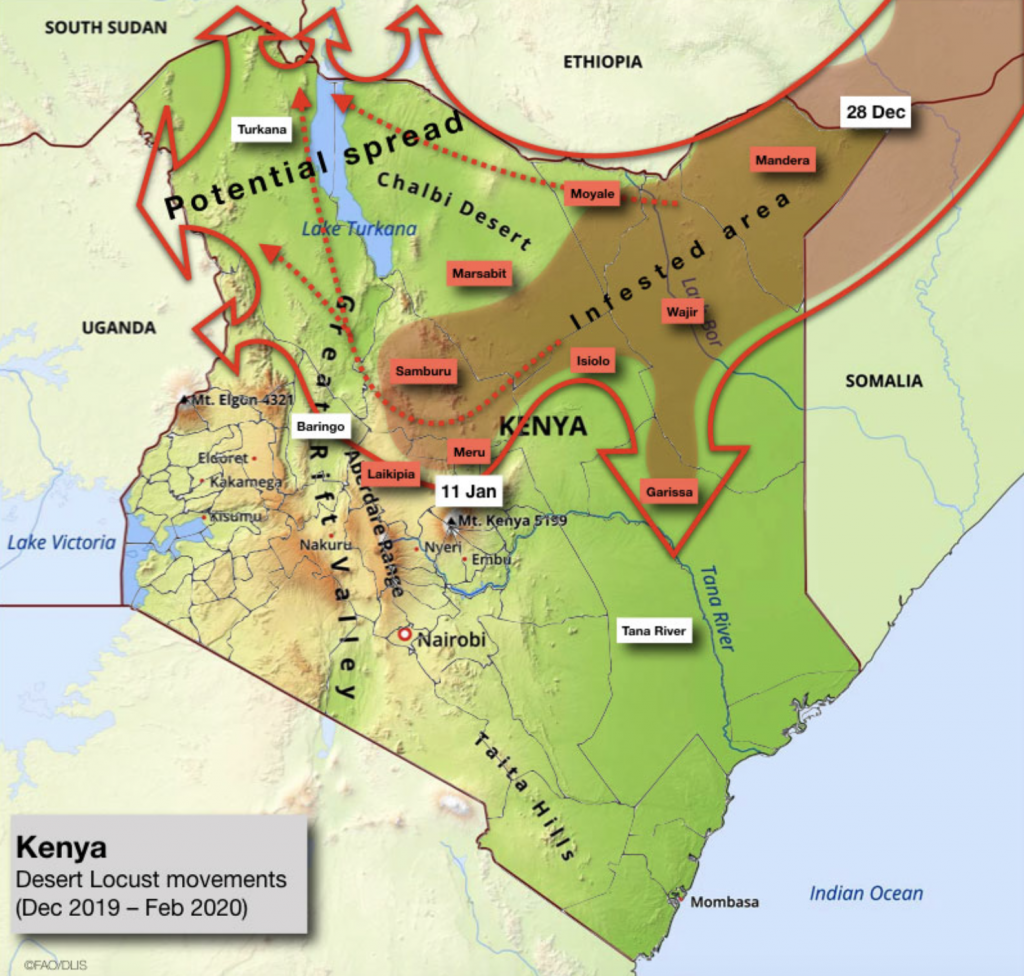Desert Locust situation update
Credits:FAO Locust Watch



Large and numerous swarms continue to threaten the Horn of Africa
The current Desert Locust situation is extremely alarming and represents an unprecedented threat to food security and livelihoods in the Horn of Africa. In addition, important locust situations continue to develop along both sides of the Red Sea, in Oman and in southern Iran.
Kenya. Immature and maturing swarms continue to arrive in the northeast from Ethiopia and Somalia and are moving throughout northern areas in Mandera, Wajir and Marsabit counties and have reached central areas of Isiolo, Meru North and northern Laikipia. Some swarms in the north have moved back into southern Ethiopia while others are now mature and laying eggs that will hatch after about two weeks, giving rise to hopper bands in February and March. Today, a swarm reached the southern Rift Valley near Kapedo on the border of Baringo and Turkana counties. Aerial and ground control operations are in progress in some areas. Further movements are expected, especially in Turkana and Marsabit counties.
Ethiopia. Ground and aerial control operations continue against immature swarms in Somali and South Oromiya regions. Some swarms are maturing while others are moving south and west into the southern parts of the country with at least one swarm reaching the edge of the Rift Valley in Southern Nations Nationalities and People Region (SNNPR). Some 6 000 ha were treated by air so far this month.
Somalia. Control operations are in progress in the northeast (Puntland) while maturing swarms continued to move southwards in central and southern areas. Some swarms were seen laying eggs in the south adjacent to northeast Kenya. Survey and control operations are limited by insecurity.
South Sudan. There remains a high risk of a few swarms appearing at any time in the southeast (Kapoeta East and Ilemi Triangle) coming from adjacent areas of NW Kenya, flying north through the Rift Valley or northwest from Marsabit county. They may transit through the area to the Rift Valley in southwest Ethiopia.
Uganda. There remains a moderate risk of a few swarms appearing at any time in the northeast from adjacent areas of NW Kenya until about the end of January.
Red Sea. Breeding is in progress and hopper groups and bands are present on the northern coast in Sudan, southern coast in Saudi Arabia, and on the coast of Eritreaand Yemen. Mature swarms are laying eggs on the Sudan/Eritrea border while adult groups have formed in Yemen and Saudi Arabia, some of which are laying eggs. So far this month, ground and aerial control operations treated nearly 23 000 ha in Saudi Arabia and almost 7 000 ha in Sudan.
Oman. Breeding is in progress on the northeast coast where hopper bands have formed. Ground teams treated more than 1 300 ha so far this month. Several immature and maturing swarms are moving south along the coast and reached Salalah. These may continue to Yemen and perhaps reach the Horn of Africa.
Southwest Asia. A few residual immature swarms persist along both sides of the Indo-Pakistan border where control operations are in progress. Adults and swarms were reported to be breeding along parts of the southern coast where heavy rains and flooding occurred earlier this month.